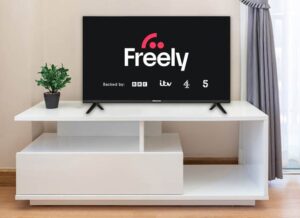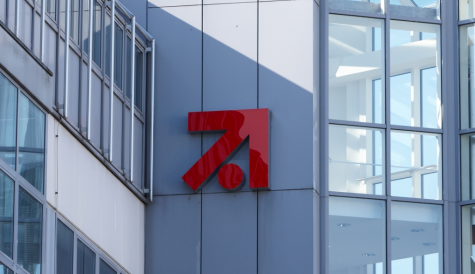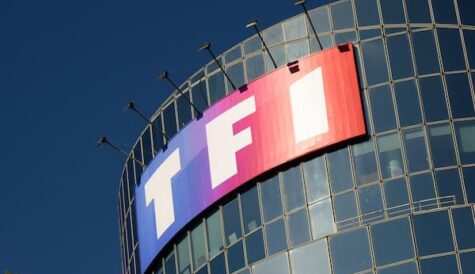The gravitational pull of broadcast switch-off
WRC-23 focused minds on how digital terrestrial TV could be compromised by spectrum sharing. Despite a ‘no change’ decision, future DTT development needs a parallel roadmap that caters for all-streaming homes – as Freely will offer in the UK. With advocacy groups now demanding protection of broadcast spectrum, 2024 starts with a familiar feeling, like life in the build-up to analogue switch-off, writes John Moulding.
 One thing is obvious at the start of 2024: the road to all-streaming is focusing minds, regardless of the ‘no change’ decision at the ITU World Radiocommunications Conference (WRC-23) in Dubai during December that means broadcasting will remain the only primary service in the 470-694MHz frequencies across ITU Region 1, which includes Europe.
One thing is obvious at the start of 2024: the road to all-streaming is focusing minds, regardless of the ‘no change’ decision at the ITU World Radiocommunications Conference (WRC-23) in Dubai during December that means broadcasting will remain the only primary service in the 470-694MHz frequencies across ITU Region 1, which includes Europe.
UHF digital terrestrial is safe for now, but the shadow of spectrum sharing (with mobile) remains and will be back on the agenda at the 2031 World Radiocommunications Conference. The EBU hailed the WRC-23 decision because it provides stable regulatory conditions for the evolution of DTT, including the introduction of UHD.
The EBU led the way in articulating broadcast industry fears that spectrum sharing brings the danger of interference and would lead to “interminable and complex negotiations between countries” and still render large parts of the sub-700MHz band unusable in certain areas. That suggests any sensible strategy combines any future DTT developments with a parallel plan for life without broadcast.
Enter Freely

Source: Everyone TV
Enter Freely, which has to be one of the most significant developments in European television this year. This is a future-proofed free-to-air platform that could carry viewers from a majority-broadcast world to an all-streaming environment if it needs to. And even if broadcast spectrum remains readily available, it can be the broadcaster-friendly (broadcaster-controlled) FTA platform/aggregator that serves IP-only homes where there is no rooftop aerial, no satellite dish, or simply no interest in buying a receive device that contains a broadcast tuner.
Freely is a big deal, because it is a potential successor to the UK’s digital terrestrial and digital satellite free-to-air platforms (which like Freely, are operated by Everyone TV, which is owned by the UK’s leading public service broadcasters – the BBC, ITV, Channel 4 and Channel 5). Before it was given its brand identity in December, Everyone TV called Freely ‘Next Generation Platform’ (NGP) and its programme guide consultations revealed the creation of a new protocol for IP channels delivered via an NGP-approved method – with this technical specification enabling a consistent and seamless viewing experience as consumers move between broadcast and IP-delivered channels in the approved streaming app.
Freely is about genuine integration of streaming and broadcast channels in the same programme guide, and while it is designed to enable hybrid broadcast plus streaming, it has already thought through the experience for IP-only homes. The proposed programme guide will support delivery of a broadcast version of a channel, or a streaming version of the same channel, into the same programme guide slot.
That means that an IP-only home will get the streamed version of a channel without seeing any presentational difference. If a channel is broadcasting on UHF spectrum today but ceases broadcasting tomorrow (or maybe post 2031), it keeps its programme guide spot and starts streaming instead. The consumer sees no obvious UX change.
Freely has taken a blank sheet of paper and figured out how you make free-to-air work for consumers where there may be a broadcast signal, or there may not be one.
Everyone TV is not the only platform operator with a migration plan. The growing number of IP-only set-top boxes available from Pay TV operators in Europe is a pointer to where we are heading. These are no longer the second room option in a multi-room offering where IP clients feed off a broadcast/IP gateway – they are increasingly offered as a primary STB in the living room.
All-streaming homes are a fact today, regardless of if/when QAM modulators are retired for cable video, or satellite transponders give way to fibre delivery. Unaffected by ITU World Radiocommunications Conference UHF spectrum decisions, pay TV operators are simply looking to reach consumers they could not otherwise serve (without satellite dishes, without old coax in the ground, without the cost of tuners and maybe hard drives in set-top boxes).
All-streaming world
The road to more streaming, and eventually all-streaming, is focusing the minds of regulators, of course. There are ongoing discussions about the prominence privileges public service broadcasters should (or should not) carry from the broadcast world into the connected TV space (now the latter is having more influence on what people see). We should expect politicians themselves to start taking a greater interest in streaming migration, too.
Last autumn, the over-60s advocacy group Silver Voices made a splash in the UK when they published a report showing that older viewers are concerned about reduced broadcast services, especially due to lack of high-quality broadband. The organisation demanded that the UK government commits to protecting broadcast services beyond 2034.
Its study showed that, “On average, people believe broadcast TV and radio should be protected until well beyond the 2040s, with a range from 2051 to 2079.” National newspaper headlines appeared like: ‘Save TV and radio for pensioners and delay terrestrial switch off’ and ‘Save our telly signals!’ – with the latter announcing the new campaign that had been launched ‘to protect universal free TV services from being turned-off by broadband’.
This is a reminder of what life felt like in the build-up to the analogue-to-digital broadcast switchover. We may still be a long way from broadcast switch-off, but its ‘presence’ can now be felt, as a gravity field that grows stronger each year.



